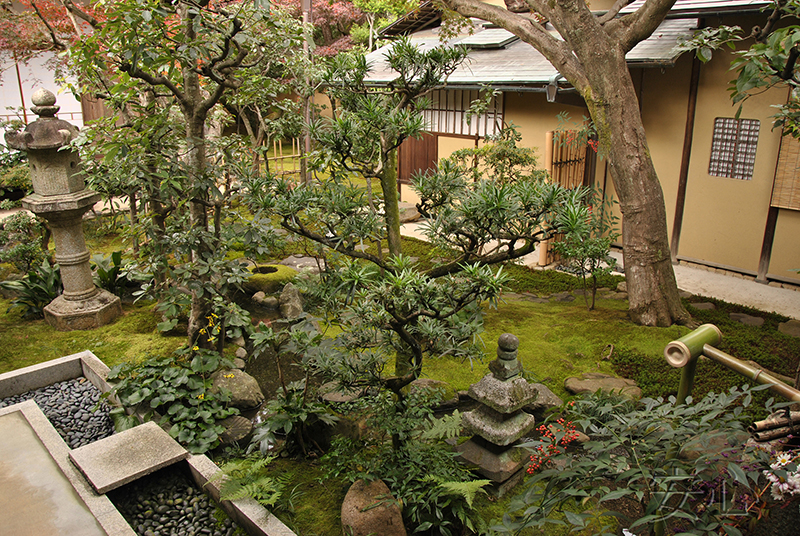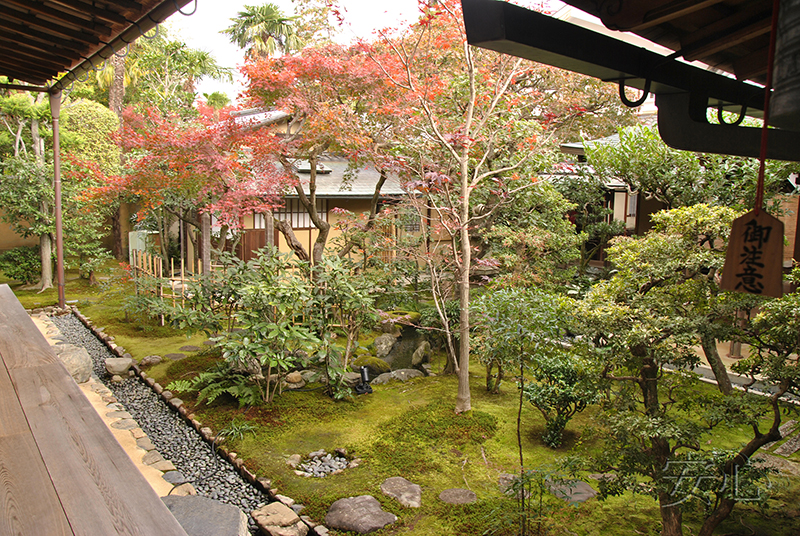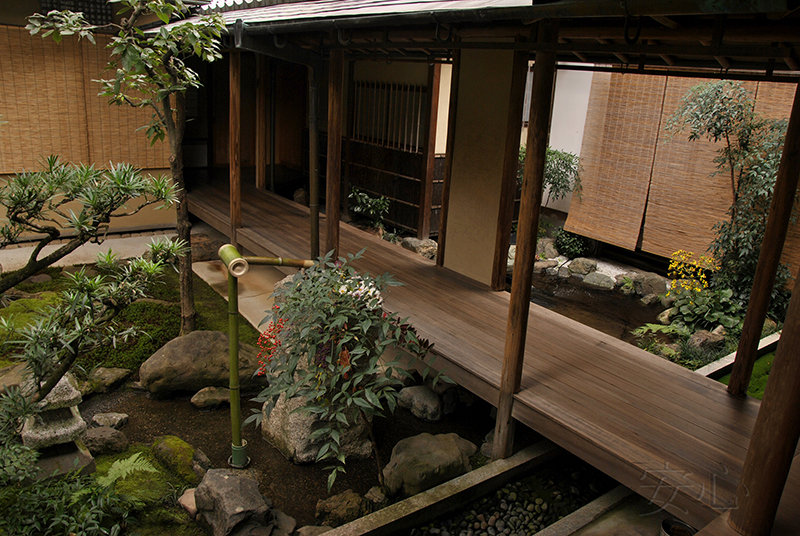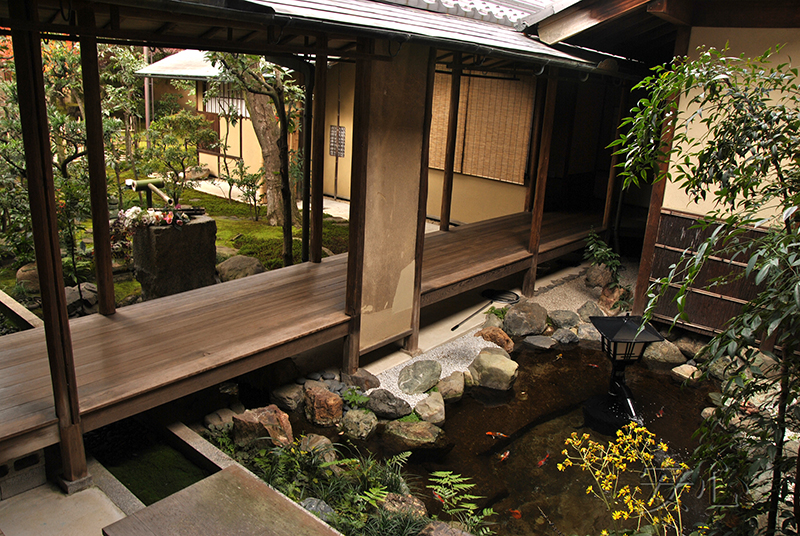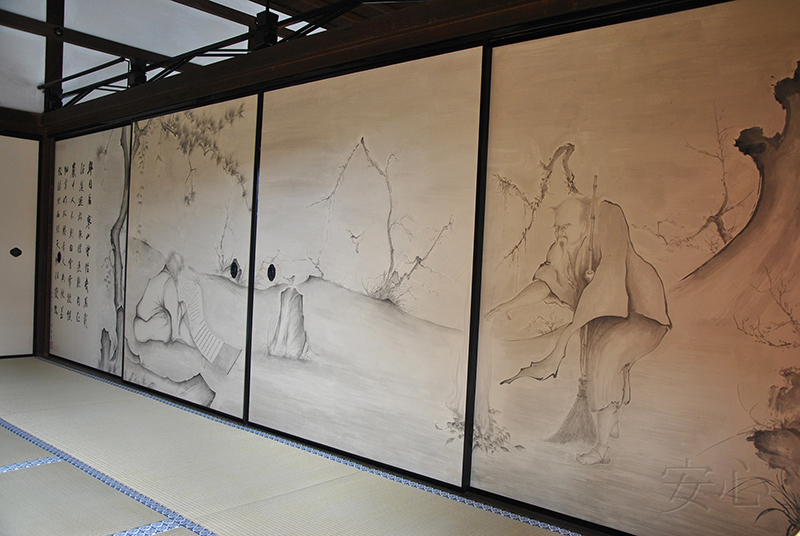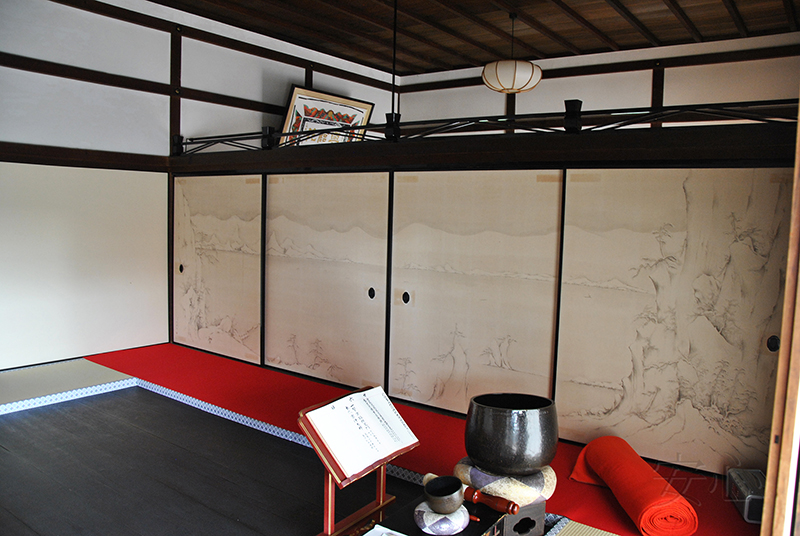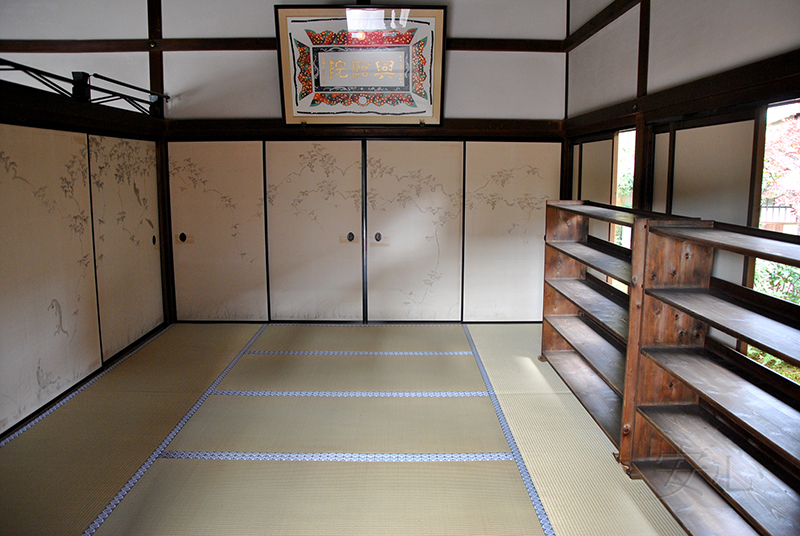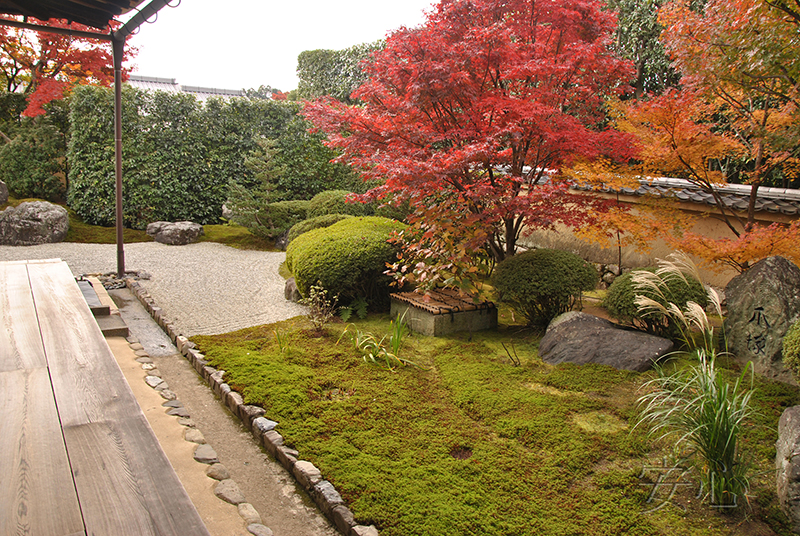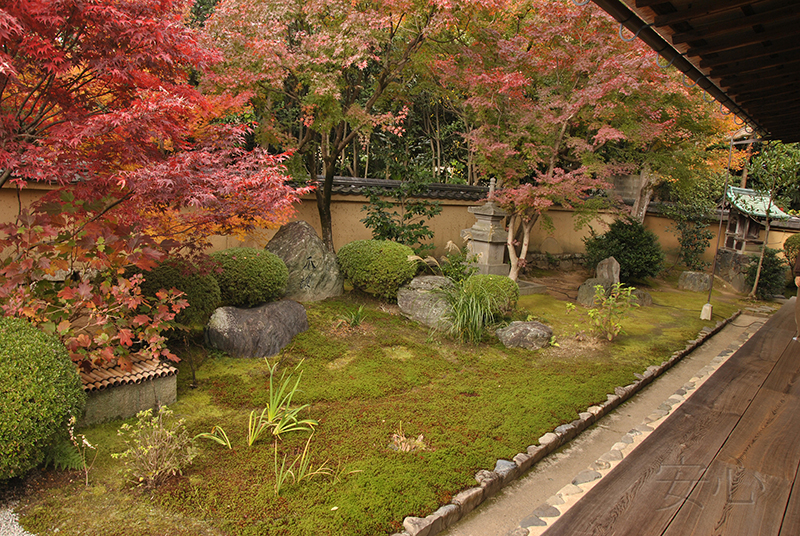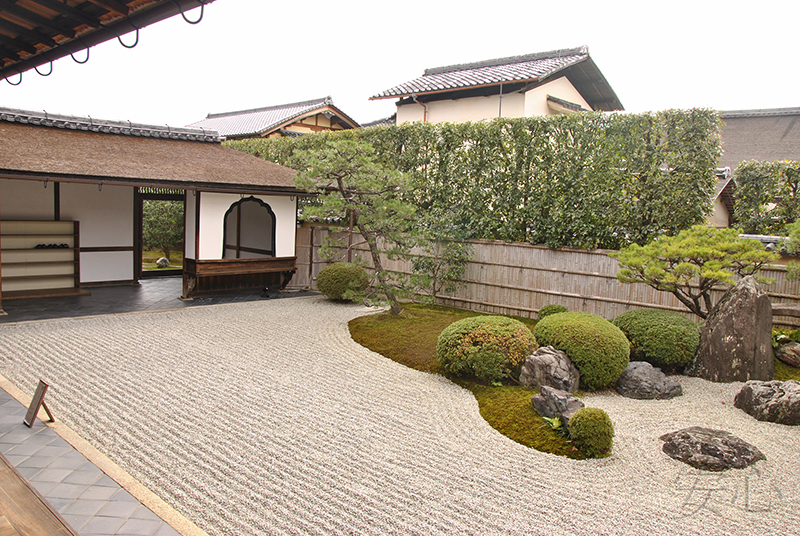
Korin-in Temple gardens, Kyoto
Korin-in Temple was built as the family temple of Saemono-suke Hatakeyama, Lord of Noto prefecture (now Ishikawa) , about A.D. 1520. The first priest Shohkei was one of the most distinguished priests Daitoku-ji school has ever produced.
The entrance massive gates are typical of the Muromachi era. This is the only structure that has survived to this time from the Muromachi era and one of the oldest gates in the territory of Daitoku-ji.
After walking a little along the path, we see the Karamon, Chinese gates. Their roof is covered with bark of cypress, and wave-like lattice windows in the form of a flower are part of the architectural style of Zen Buddhism. A dry garden is visible through the window.
Next, we enter the corridor leading to tea garden. The Kankyo-tei tea house was built in 1928 by Gendo Yamaguchi, a famous businessman who supported numerous temples. Kankyo-tei, a tea room, was named from a poem of great Chinese Poet So Tohba. It was made after the pattern of famous Hassoh-an. It is interesting that the hieroglyph “kan” means “rich in content”, and “kyo” - “empty in content”. Such a name where two contradictory words are used, very typical for Zen Buddhism.
Of course, I was most interested in a tea garden concluded between the buildings. It was impossible to go down, so we should stay on the engawa, which encircle the main building.
A narrow stream flows through the entire garden. Its shores are framed by stones. Also we found two chozubachi in the water. One of them, overgrown with moss, is closer to the tea house.
The second one is tall, adjoins the corridor connecting the tea complex and the main building of the temple. Water is supplied from the bamboo gutter. In the chozubachi there were cut fresh flowers that day. I don’t know if they always put it there, or that day was special, but it looked unusual.
The whole garden is covered with soft green moss, through which there are paths made of rounded stones. Among the calm greenery of the foliage, there are only separate bright spots of autumn maples, and red berries of graceful shrubs.
The main building of the temple (Hojo) was rebuilt after a fire in 1533. Its low roof, stretching far beyond the cornice, is characteristic of the Muromachi period.
Inside the building is simplicity and grace. On the walls, drawings in the style of Chinese painting.
The dry garden, located in front of Hojo, was restored by the famous garden master Kinsaku Nakane according to the preserved old documents.
The islands and stones on snow-white sand symbolize the perfect world of the Horai. In the back, you can see two low hills covered with moss, between them a stone bridge is laid. It depicts the famous bridge of the Kokusei-ji temple, located about 200 km. from Shanghai. This temple is important in the history of Japanese Buddhism.
Large stones are located on both sides of the bridge. Behind them is visible perfectly formed pines. All this symbolizes the blessed land where immortals live.
There is a small rear courtyard around the corner. There are stones in the Sanson-Seki style, hieroglyphs are drawn on the central one. Unfortunately, I didn't find any information what they mean.
Of course, this dry garden is the strongest in effect on the visitor. It attracts, amazes with its greatness, makes us feel involved in this universe depicted by a brilliant artist. Thoughts are involuntarily calm down, and silence absorbs you.
Garden Information:
Address: 80 Daitokuji-cho, Murasakino, Kita-ku, Kyoto, Japan
Opening hours: from 10 a.m. to 4.30 p.m.
Open for the public only in spring and autumn.
anshin©2011All rights reserved. When using the materials of the site, reference is obligatory.
Proposals for co-operation, as well as comments and suggestions on the site please send to the address: anshinsad@gmail.comtel: +7 (965) 121-80-60, 10am-20pm



